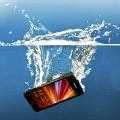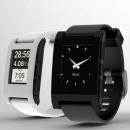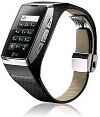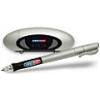Future Gadgets
 This page is about future gadgets - smartwatches and waterproof phones.
This page is about future gadgets - smartwatches and waterproof phones.
Whether accidentally dropped in a sink, toilet or swimming pool; soaked by a rainstorm or a beverage; sent through a washing machine or victimized by a water gun - this is how over a million smartphones are water-damaged each year.
Touch screens, apps, web access and voice recognition are some of the reasons smartphone sales are through the roof every year. But buyer beware, the devices are not waterproof - not even close.
Water in electronic gadgets is catastrophic. Warranties rarely cover the damage and new contracts are usually required. You lose your information, contacts, apps, and photos. Not fun.
But we may soon have waterproof phones because of a new technology that uses nanotec coatings.
Two companies leading the research and development into this technology are HzO and Liquipel.
HzO won the CES 2012 Innovations, Design and Engineering Award for its nano coating technology while Liquipel received a 2012 Edison Award in material science for its nano coating technology.
Both companies use a vapor deposition process to coat electronic devices with a very thin film. This film is hydrophobic, which means that it repels water, humidity, perspiration, coffee, wine, soda and even acid.
The coating doesn't trap heat, is virtually weightless, invisible and non-toxic, which makes it great for protecting electronic devices.
This is how it works: a device is placed within a vacuum chamber. A vacuum is created and a specially formulated vapor is introduced into the chamber.
This vapor seeps into the electronic components of devices depositing a uniform layer of molecules that repel water.
These coatings are not meant to protect smartphones during deep sea dives or for any extended underwater use.
They will protect devices against damage caused by accidental immersions even if the device has been left submerged in water for a few hours.
Though HzO and Liquipel both use vapor deposition for application, their respective coatings and applications are different from one another.
Both HzO and Liquipel provide their services to manufacturers but Liquipel will also provide services directly to consumers.
Sources: hzoinside.com;liquipel.com
Smart Watches

Inventor Eric Migicovsky, a 25-year-old University of Waterloo graduate, presold 85,000 of his future gadgets for delivery to users later this year.
The Pebble is a smartwatch that wirelessly connects via bluetooth to an iPhone or Android smartphone and uses smartphone apps. It's the only smartwatch that does so.
The Pebble has various applications that allow users to access information or control devices from their wrist.
Besides checking calls, emails, text messages or social media updates, the smartwatch has potentially unlimited applications.
Migicovsky will release an open software development kit for it's pebble technology, which will allow developers to design watch apps similar to what Apple did with it's iPhone developer kit.
Current Pebble applications include a music control app; a fitness tracker app that monitors stats related to cycling or jogging; a golfing range finder app for 25,000 golf courses; and a sensor app that connects with a device you attach to things you want to communicate with.
Migicovsky developed his prototype from cell phone parts but used a high resolution, customizable (different watchfaces) e-paper display, which is a technology that allows the face to be read in direct sunshine or use backlighting when reading in the dark.
Battery life is 7 days and is USB rechargeable. It's water resistant, vibrates and will be available in white, black, or red. It will sell for $125.
Sources: forbes.com; getpebble.com
Cell Phone Watch

Cell phone watches operate as a fully functional, fully featured mobile devices with multiple capabilities.
One potential capability is to extend or project (known as body interfacing) a interactive screen onto a body part or other surface.
A cell phone watch conveniently attaches to your wrist and not in your pocket, bag or elsewhere, so these gadgets do offer some interesting possibilities. Most of these watches feature video and still camera capability.
You wouldn't miss an opportunity to record anything because all you have to do is point your arm and click.
Features such as touch screen, radio, texting video/audio recorder-players, handwriting recognition, ebook readers, internet access, and call setting options make these watches competitive with phones.
The average talk time for a cell phone watch is about 2-4 hours, stand by is 120-150 hours. Most of these watches have rechargeable batteries and loads of applications.
Since Samsung introduced the world's first cell phone watch in 1999, there is more financing and development being done with these future gadgets.
If you're thinking of getting one, make sure you review the specifications to ensure your service provider supports the technology your choosing.
Similar to smartphones, different manufacturers use different competing technologies that may not be compatible with your cell phone service.
Sources: lg.com; samsung.com
See more...future gadgets


|
| Inventor's iPhone covers become a huge success. |
| Smartphones to replace debit/credit cards . |

|
| Pen wirelessly transfers notes to your computer or mobile device. |



